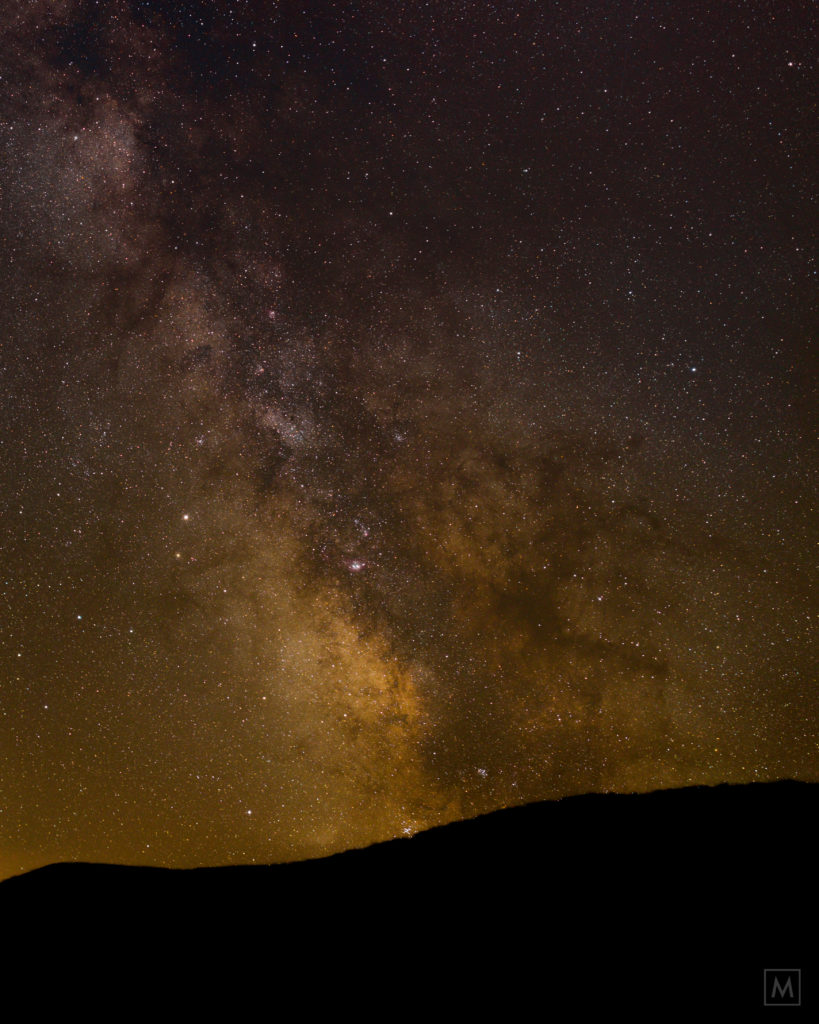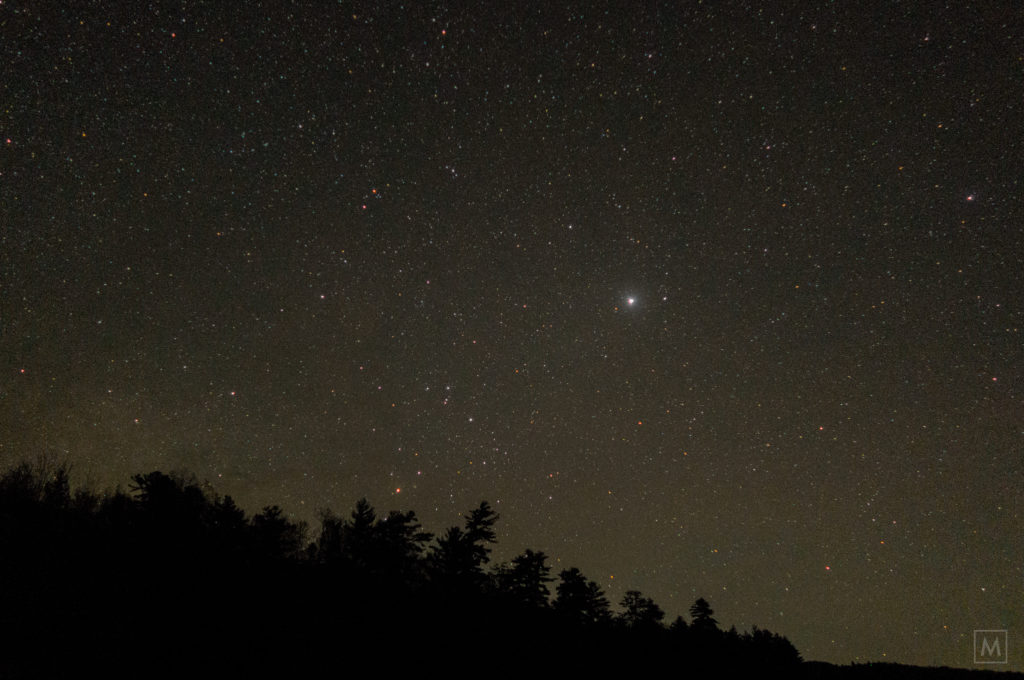I re-processed my first attempt at tracking for night sky shots.
The sky is very very very large.
We are very very very small.
Billions of stars. And all that space in between.
Mind bending.

Vermont to Switzerland
A learning curve, for sure. This mosaic / panorama is 120 images, 4 shots each from 30 camera positions. Each image has been stacked on top of each other and aligned to mean out some of the noise of shooting ISO 1600 for 30 seconds each shot. It took well over an hour to shoot the 30 camera positions – 4 shots, move, shoot 4 shots, etc., including shots I dod not use at the edges for overlap. As I was operating and moving the camera those wispy clouds were moving though the scene, which added quite a wrinkle to processing.
After stacking the images I stitched 30 of the composites into this image with AutoPano Giga, then processed in Lightroom to edit for color, brightness, and noise.
I made this with my little Canon M6 with the EFM 22 f/2 lens @ f2.8 for 30 seconds each frame, ISO 1600. The camera mounted to a Pano / Nodal head atop a Vixen Polarie star tracker which points at the north star and rotates at the same speed as the stars. The full size, original image is 10,343 pixels wide x 12,929 pixels tall.
I worked a bit more on the images I captured Monday morning. I went through the process of stacking what I had captured, then stitching and attempting to hand color / balance the frames that were captured well into astronomical twilight – the time when the sun is starting to light the dome of the sky and everything changes so quickly…

I learn so much by doing – so I need to keep doing, making, creating. And failing.
I have been watching the moon and the weather for the past few days and hoped that last night would have been a good night to get some tracked shots of the Milky Way over Silver Lake in the Green Mountain National Forest, VT – I packed up gear, kissed the kids and wife goodnight and headed off to the lake. An hour drive, and then a hike in to what I had scouted via satellite maps.
There is always this leap thats required for me – from riding a 400k, to taking on a new bikepacking route, to a long sunrise hike… the leap happens in small steps, and then there is the moment the airlock seals and you are off on your own in the vastness of the world. For early morning / night hiking its the resounding sound of the car door slamming and echoing in the woods.
I bushwhacked via GPS to a rock outcropping that I scoped out on satellite maps – but the real world didn’t want to work as well as it looked on the maps. I backtracked and wandered back to a known location and got setup. While waiting for the Milky Way to rise I did some test shots with my Canon G7x2 to see how the point and shoot handled the night sky, then setup the Vixen Polarie and I used my RRS nodal / pano head for easier movement of my camera.

I did not have a clear view of Polaris – so I aligned via compass and latitude – then used an astronomy app to confirm I was in the ballpark, I took some test shots for focus and then did a few test shots for tracking.
This image is a stitch of 8 tracked shots that I took while waiting for the earth to rotate under the MW and get it aligned over the lake. As I was waiting it got dark – which is an odd thing to have happen at night – clouds rolled in and I waited for a bit and packed up and hiked out.

Tracking – which is made possible by a Vixen Polarie that rotates at the same rate as the stars relative to the Earth seems to have worked out OK – especially for essentially being blind by not having a clear line of sight, nor a polar scope. I’m happy with the result and I will likely shorten up the length of the exposure next time out, and maybe drop the ISO a bit and stack 4 frames from each shot in order to knock down the noise.
Imagine, Try, Fail, Learn, Repeat.
On the drive home I got clear of the clouds and stopped roadside to get a few static shots – it certainly wasn’t as scenic nor dark as at the lake – but I did get a consolation prize of a second image.